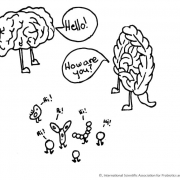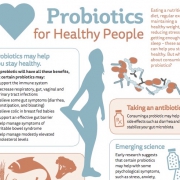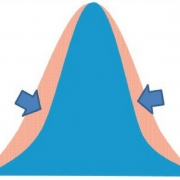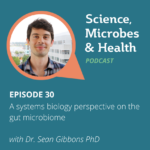Why responders and non-responders may not be the holy grail for biotics
By Prof. Dan Merenstein MD, Georgetown University Medical Center, USA
In September the New York Times published an article titled “What Obesity Drugs and Antidepressants Have in Common“. It was written by a physician who had personally struggled with weight issues and depression. In his personal journey with these health challenges, he hesitates to undergo any treatments. But he eventually does and experiences much relief from them. Why would a practicing physician hesitate to use approved drugs?
The article opens with this viewpoint: “We like to think we understand the drugs we take, especially after rigorous trials have proved their efficacy and safety. But sometimes, we know only that medications work; we just don’t know why.” He goes on to discuss selective serotonin reuptake inhibitors (SSRIs) and the recently approved weight loss drugs, such as glucagon-like peptide-1 (GLP-1) receptor agonists. The former have been widely used for over 40 years, while the weight loss drugs are more recent. For both classes of drugs, we have some ideas how they work but the exact mechanisms have not been elucidated. While this knowledge gap has not prevented wide usage, the author of the article was skeptical about using the drugs if he did not know exactly how they worked.
When I started studying probiotics 15 years ago, I began to interact with a different group of scientists than I was used to. My new collaborators were basic and applied scientists, not just clinicians. I had opportunities to attend conferences that covered bench science more than clinical evidence. My perspective as a clinical researcher was different from most of the others in attendance. I was somewhat surprised to learn how much emphasis those scientists placed on understanding mechanisms. On the one hand, intuitively it makes sense. If you know how something functions, you have a lot more confidence that it will do what you expect it to do, and more assured that it can be used safely. You also have a sense that it should work for you. But on the other hand, knowing an intervention is effective is more important than knowing how it achieves its effectiveness.
This emphasis on understanding mechanisms of action for interventions reminds me of the development of beta-blockers, a class of medicines that block epinephrine, and cause the heart to beat slower and with less force. One of the most common test questions I was asked when I was a medical student and resident is: What class of blood pressure medicines are never permissible for a patient with congestive heart failure (CHF)? Well it was obvious to all of us that the answer was clearly beta-blockers, as you wouldn’t want to slow the heart rate and reduce the force of the heart in a patient already suffering from a poorly performing heart. Yet after clinical trials were completed, beta-blockers were shown to be effective treatment for CHF patients and are now a mainstay of CHF treatment. This was counterintuitive considering the drug’s mechanism of action. So in fact, a drug’s mechanism of action does not always lead in a straightforward way to knowledge about which conditions can be treated or which individuals will respond.
Beyond mechanisms of action and individual response
In clinical medicine, we use two important statistics to capture efficacy and safety of an intervention: number needed to treat (NNT) and number needed to harm (NNH). NNT is the number of patients that need to be treated in order to have an impact on one person, while the NNH is the number of patients who must be treated with an intervention before one patient is harmed. All interventions have both an NNT and NNH. Obviously, the goal is a very low NNT and a high NNH. But we are rarely so fortunate. Take for example statins, a medicine many of us take. In patients at low risk of cardiovascular disease, the NNT is 217, which means 1 person out of 217 avoided a nonfatal heart attack by taking statins. Meanwhile, NNH for muscle pain is 21 and for developing diabetes is 204.
NNT and NNH are rarely considered in the biotics field. Yet I commonly encounter discussions about the importance of identifying responders versus non responders to biotic intervention and the need to elucidate the mechanism(s) of action for biotic substances. I believe this is because many of the scientists doing research in biotics come not from a clinical background but more bench research, where the questions really are those of mechanism. Many seem to believe that such knowledge is the Holy Grail of biotics – if only scientists could have such a good grasp of mechanism that they could figure out why certain people responded while others do not. There is nothing inherently wrong with wanting to identify reasons for differences in individual response. It is what we do in clinical practice every day. When I give someone blood pressure medicine and they don’t respond to it, I wonder – Is it a compliance issue? Is the patient’s blood pressure caused by something that the medicine does not impact? Is the patient taking the medication at the wrong time, with the wrong diet, or with other interfering medicines? Clinicians always must think about who is responding and who is not responding. However, NNT and NNH for biotics are worth prioritizing.
Data have shown that certain probiotics can get people better from an upper respiratory tract infection 26 hours earlier, or can treat infantile colic, or improve irritable bowel syndrome symptoms with a NNT respectively of 20, 15 and 100, while having a very high NNH. These are great products. But instead what I often hear at conferences is that we need to figure out why some people respond to the probiotics and others do not. I agree, go ahead and figure it out. But have realistic expectations. If two of the most widely used medicines, SSRIs and GLP-1 agonists, have an unclear mechanism, and if statins have an NNT of 217, be realistic about the impact of your probiotic. When a doc prescribes you Lipitor, he doesn’t say, “Good luck – I hope you are the 0.4% in which it helps and aren’t the 5% that gets muscle cramps.” The hope is that for you, the NNT is 1. And when your strain or product does have an impact, feel free to find ways to improve efficacy but celebrate the impact it has. If possible, maybe compare your NNTs to standard of care, or if no comparison look at your NNT versus NNH to really better understand what your biotic can do.















